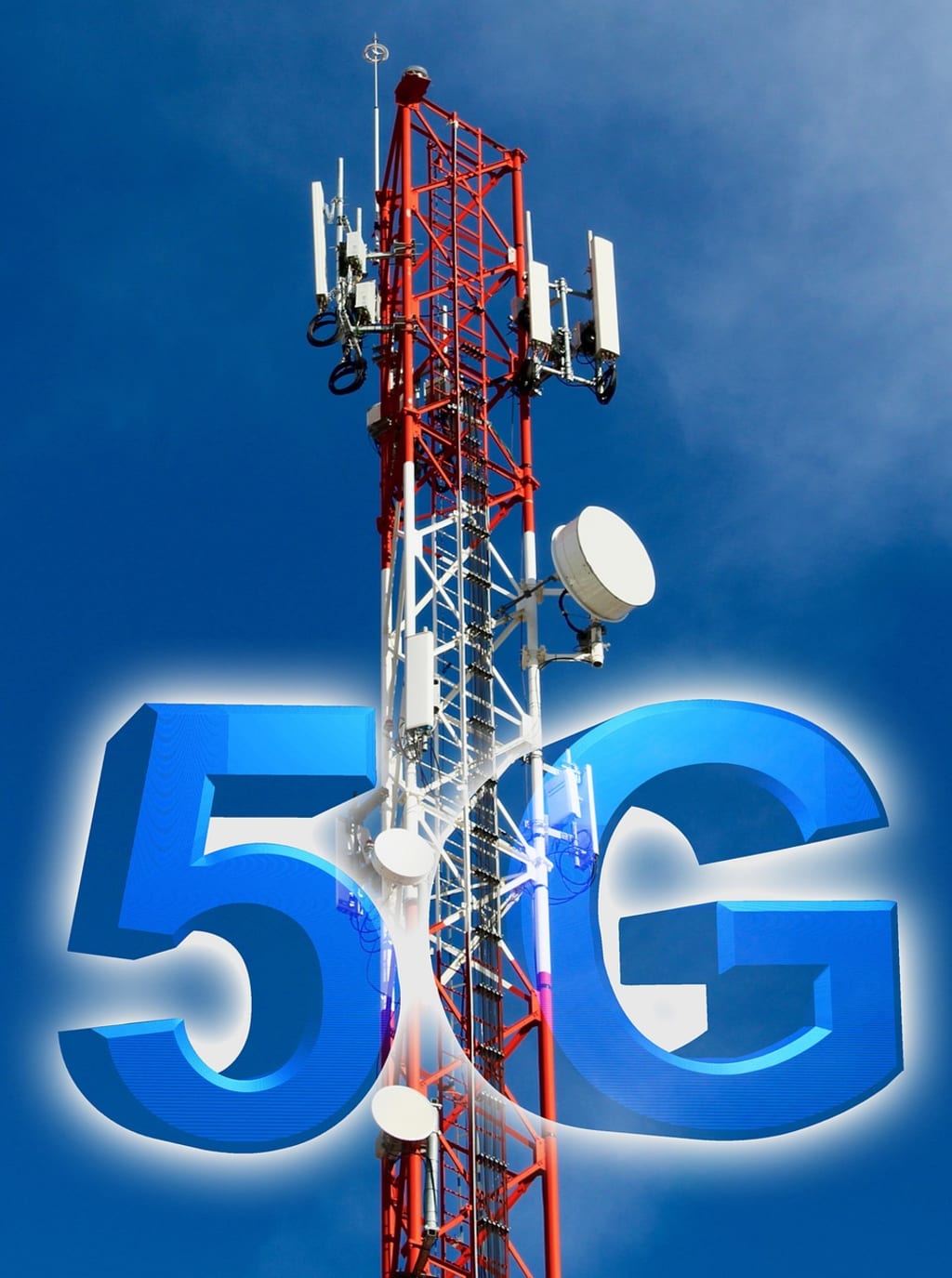5G Technology
The rollout of 5G networks and its implications for faster internet speeds, improved connectivity,

Ultra-High Speeds: 5G networks provided blazing-fast data speeds, surpassing previous generations to enable seamless streaming, gaming, and downloading at unprecedented rates.
Low Latency: With minimal latency, 5G facilitated real-time interactions, making activities like online gaming, video conferencing, and remote surgery smoother and more responsive.
Massive Connectivity: 5G supported a massive number of connected devices simultaneously, laying the foundation for the Internet of Things (IoT) to flourish on a global scale.
Enhanced Mobile Broadband: 5G delivered enhanced mobile broadband experiences, allowing users to enjoy high-definition video streaming, virtual reality (VR), and augmented reality (AR) applications with unparalleled clarity and immersion.
Network Slicing: 5G's network slicing capabilities allowed operators to partition network resources dynamically, optimizing performance for different applications and user requirements.
Mission-Critical Services: 5G enabled reliable and secure communication for mission-critical services such as autonomous vehicles, emergency response systems, and industrial automation, where uninterrupted connectivity is essential.
Edge Computing Integration: By integrating with edge computing infrastructure, 5G reduced latency and improved data processing efficiency, unlocking new possibilities for real-time analytics and edge-based applications.
Enhanced Security: 5G incorporated advanced security features such as end-to-end encryption and authentication mechanisms to safeguard data and protect against cyber threats in an increasingly connected world.
Network Resilience: 5G networks were designed to be highly resilient, capable of adapting to changing network conditions and mitigating disruptions to ensure uninterrupted connectivity.
Energy Efficiency: 5G technology prioritized energy efficiency, optimizing power consumption in network infrastructure and connected devices to reduce carbon footprint and environmental impact.
Smart Cities Integration: 5G facilitated the development of smart cities by enabling seamless connectivity between sensors, devices, and infrastructure, paving the way for efficient urban management and improved quality of life.
Telemedicine Advancements: With high-speed, low-latency connectivity, 5G revolutionized telemedicine by enabling remote consultations, medical imaging, and surgical procedures with greater precision and reliability.
Immersive Experiences: 5G-powered AR and VR applications delivered immersive experiences across entertainment, education, and training, transforming how users interacted with digital content and environments.
Enhanced Public Safety: 5G networks supported advanced public safety solutions, including real-time video surveillance, emergency response coordination, and disaster management, to enhance community resilience and security.
Industry 4.0 Transformation: 5G accelerated the adoption of Industry 4.0 technologies, such as robotics, automation, and IoT, by providing the connectivity and bandwidth required for seamless integration and operation in smart factories and supply chains.
Remote Work Enablement: 5G facilitated remote work by providing reliable, high-speed connectivity for telecommuters, enabling seamless collaboration, file sharing, and video conferencing from anywhere in the world.
Personalized Advertising: Leveraging 5G's capabilities, advertisers delivered personalized and location-based content to consumers in real-time, enhancing engagement and targeting effectiveness.
Smart Agriculture Solutions: 5G-enabled IoT sensors and drones revolutionized agriculture by providing real-time monitoring of crops, soil conditions, and livestock, optimizing resource usage and increasing yields.
Digital Twins: 5G technology facilitated the creation of digital twins—virtual replicas of physical assets or systems—allowing for remote monitoring, analysis, and simulation in various industries, including manufacturing, infrastructure, and healthcare.
Next-Generation Gaming: 5G-powered cloud gaming platforms delivered console-quality gaming experiences to mobile devices, eliminating the need for expensive hardware and enabling gamers to play anywhere, anytime.
Immersive Retail Experiences: Retailers leveraged 5G to create immersive shopping experiences through AR-powered virtual try-ons, interactive product displays, and personalized recommendations, enhancing customer engagement and satisfaction.
Smart Grid Management: 5G-enabled smart grids optimized energy distribution and consumption by providing real-time data monitoring, predictive analytics, and automated control mechanisms, improving efficiency and reliability.
Smart Transportation Solutions: 5G facilitated the development of smart transportation systems, including connected vehicles, traffic management, and autonomous driving technologies, to improve safety, efficiency, and sustainability on roads and highways.
Environmental Monitoring: 5G-powered IoT sensors monitored environmental parameters such as air quality, water quality, and biodiversity, enabling timely interventions and informed decision-making to mitigate environmental risks and promote sustainability.
Real-Time Language Translation: 5G-powered translation services offered real-time language translation for multilingual communication, breaking down language barriers and facilitating cross-cultural interactions in diverse settings.
Remote Education Platforms: 5G-enabled remote education platforms delivered immersive learning experiences through virtual classrooms, interactive simulations, and collaborative tools, expanding access to quality education globally.
Supply Chain Optimization: 5G-enabled IoT devices tracked goods and inventory in real-time throughout the supply chain, optimizing logistics, reducing costs, and minimizing delays in production and delivery.
Smart Home Automation: 5G-powered smart home devices and systems offered seamless automation and control of household appliances, lighting, security cameras, and HVAC systems, enhancing comfort, convenience, and energy efficiency.
Real-Time Weather Forecasting: 5G-enabled weather monitoring systems provided real-time data collection and analysis for accurate weather forecasting, helping communities prepare for and mitigate the impact of natural disasters.
Remote Monitoring and Caregiving: 5G-enabled healthcare devices and applications enabled remote monitoring of patients' vital signs, medication adherence, and health conditions, empowering caregivers to provide timely interventions and support.
Smart Waste Management: 5G-powered IoT sensors optimized waste collection and recycling processes by monitoring fill levels, scheduling pickups, and optimizing route efficiency, reducing costs and environmental impact.
Augmented Reality Navigation: 5G-powered AR navigation apps offered intuitive and immersive navigation experiences, overlaying digital directions and points of interest onto the user's real-world environment for enhanced wayfinding.
Personalized Fitness Coaching: 5G-enabled fitness apps provided personalized coaching and feedback based on real-time biometric data, helping users achieve their fitness goals and maintain a healthy lifestyle.
Virtual Fashion Try-Ons: 5G-powered AR fashion platforms allowed users to virtually try on clothing and accessories in real-time, enhancing the online shopping experience and reducing returns.
Enhanced Emergency Response: 5G-enabled emergency response systems provided precise location tracking, video streaming, and communication capabilities to first responders, improving response times and situational awareness in crisis situations.
Smart Water Management: 5G-powered IoT sensors monitored water usage, quality, and distribution in real-time, enabling efficient water management, leak detection, and conservation efforts in urban and rural areas.
Real-Time Traffic Optimization: 5G-powered traffic management systems analyzed real-time traffic data and adjusted signal timing, lane configurations, and route recommendations to optimize traffic flow and reduce congestion.
Remote Asset Monitoring: 5G-enabled IoT devices monitored and managed remote assets such as machinery, equipment, and infrastructure, providing real-time
About the Creator
IDIFY
crafting articles isn't just a task; it's our relentless pursuit, our fervent passion, and our artistry manifested in words. With a blend of creativity, precision, and unwavering dedication,
Enjoyed the story? Support the Creator.
Subscribe for free to receive all their stories in your feed. You could also pledge your support or give them a one-off tip, letting them know you appreciate their work.





Comments
There are no comments for this story
Be the first to respond and start the conversation.